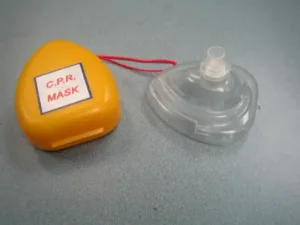Advanced Cardiac Life Support (ACLS) is part of the American Heart Association’s Basic Life Support (BLS) system, primarily targeted towards health care providers. Hospitals and other health care facilities in the country normally request ACLS certification from potential employees. The ACLS program covers the performance of CPR and AED in the health care setting, primarily using a team-based approach.
About ACLS training course content

The target group that ACLS training is tailored for is any person working in a health care setting. They can be nurses, radiologic technologists, and even nursing aids. People who directly participate in the emergency response system in a health care setting can enrol in this training program. The ACLS program runs for 16 hours in total.
Take note that you can only take an ACLS program if you have an existing, valid BLS for health care provider card. Only health care providers whose scope and practice include the basics of ACLS can apply for ACLS training. An exam and skills test need to be passed before a trainee can begin training.
Course outline
- Because training in basic BLS is required from students taking this program, the course content focuses more on in-depth knowledge and skill building regarding cardiovascular care and support. The program teaches the latest guidelines from the American Heart Association, BLS 2010, and the Emergency Cardiovascular Care (ECC) concept.
- Basic CPR skills are also taught in the ACLS program, including chest compressions, rescue breaths, and automated external defibrillation.
- Airway management – especially for patients with advanced airways (e.g. trache tubes, endotracheal tube)
- Related pharamacology when answering a “code”, primarily epinephrine and other drugs used to treat arrhythmias
- Stroke management

The primary guideline followed in teaching ACLS is the chain-of-survival: (1) recognition of cardiac arrest, (2) CPR, (3) Rapid Defibrillation, and (4) Post-cardiac arrest care. Unlike CPR performed out of the health care setting which only focuses on the first two steps (three, if an AED is available), ACLS covers all four parts of the chain. The effectiveness of the CPR performed can be seen in the final step, post-CA care of the patient.
Teaching methods
Most lessons are conducted in large groups while skill building can be done in both bigger and smaller groups. Case-studies are usually conducted within small groups of trainees, usually 1 instructor to 6 students.
Hands-on training is given to all ACLS students, practicing ACLS skills on both adult and pediatric training mannequins using high-end AEDs and first aid equipment.
Certification and validity
To pass the ACLS program, a student has to pass the skills test and the written exam. Completion cards are given to students who are able to meet all the program requirements and pass all the exams. These cards are only valid for two years but can be renewed through a renewal course. The ACLS renewal course runs for 5 to 6.5 hours in total. Only students whose cards are still valid can take a renewal course.
